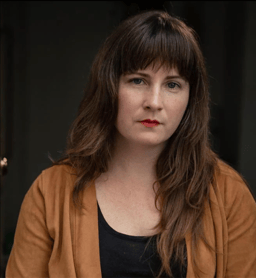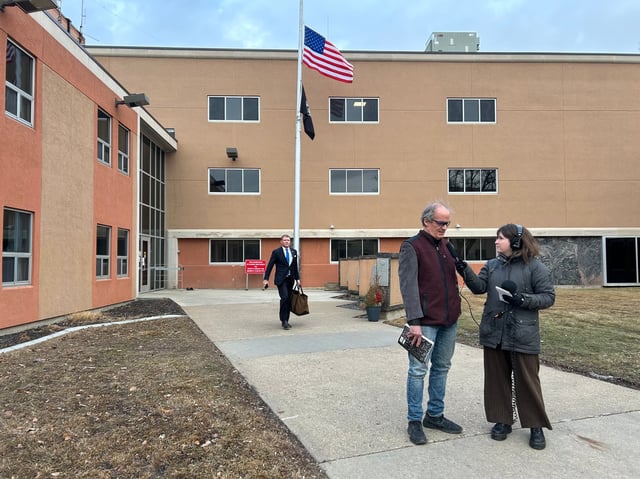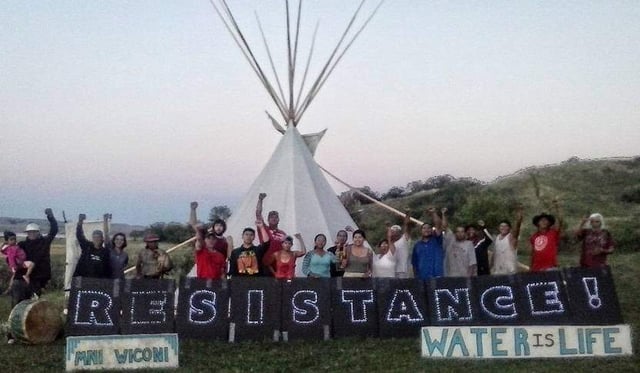
This is part four of a seven-part series produced in partnership with Grist as a companion to the SLAPP’d season of the Drilled podcast. You can see all seven pieces together in a beautiful layout over on Grist’s site, where you’ll also find other great climate stories. You can also find the rest of the stories in this series, the podcast, and related stories here.
Jury selection began on a chilly morning last February. "I want to congratulate you on being chosen for jury duty,” said Judge James Gion to the pool of potential jurors. “It is one of the highest obligations and privileges of our democratic system."
Gion, a judge of 10 years, presided over the Stark County District Court in rural western North Dakota, more than 90 miles away from Morton County, where the suit was filed. Every judge in the entire South Central Judicial District of North Dakota, in which Morton County sits, recused themselves from the case due to conflicts of interest.
Over the next two days, two sets of around 30 potential jurors, selected from the local populace, would answer questions from the lawyers. Each side of the lawsuit aimed to select jurors who would be most favorable to their case, and they sought to convince the judge to eliminate people too biased to be fair.
As lawyers questioned the jury pool, a pattern emerged: Multiple potential jurors said that hearing about the Standing Rock protests reminded them of what they called “the disruption in our community.” One woman put it plainly: "I think you'll have a tough time finding people completely unbiased on that, because it affected everyone."
Greenpeace’s lawyer, Everett Jack, asked the group: “How many of you feel the same way?”
All but a handful of people raised their hands.
About five months before jury selection began, an unusual newspaper, Central ND News, began showing up in people's mailboxes. Sandwiched between articles criticizing then-presidential candidate Kamala Harris and analyzing the dangers of “illegal aliens” were recollections about the Standing Rock protests a decade before. Most were unpleasant.
One headline read, “Former Dakota Access pipeline protester: 'We ended up creating a local ecological disaster.'”
Another said, “THIS MONTH IN HISTORY, OCTOBER 2016: Area schools locked down as authorities respond to pipeline protests.”
Central ND News is part of a company called Metric Media, which includes dozens of locally-oriented media sites that have been labeled as part of a “pay-for-play” network. For a price, that network has allowed corporate executives and political operatives to order up articles and have them distributed to specific audiences. These latest stories were apparently aimed at residents of Morton County, where the Standing Rock protests took place — and from which the jurors were selected. According to court filings, a murky trail of funds connects Energy Transfer’s board chair Kelcy Warren to the newspapers. Metric Media did not respond to a request for comment.

When Jack, Greenpeace’s lawyer, asked about the newspapers, a potential juror pulled out a copy he had brought with him. "I thought it was kinda weird that I got that,” he said. “It brought back memories. I agree with it that what happened down there wasn’t good.”
Greenpeace had already attempted to get the trial moved to another county, arguing that the Morton County jury pool would be too biased to decide the case fairly. In a survey the organization commissioned from the National Jury Project, a consultancy that does jury research, 97 percent of respondents gave answers indicating bias against Greenpeace, or, in a few cases, Energy Transfer.
Many of the potential jurors also had financial links to the fossil fuel industry. One of them, labeled juror 14 by the court for the sake of anonymity, said he didn’t think the case was right for him because he worked in the petroleum industry. He added that he would be uncomfortable ruling against his industry, and that he would be less likely to believe Greenpeace’s witnesses than Energy Transfer’s. Juror 14 also revealed that he had a family member in law enforcement who policed the protests. When Greenpeace’s lawyers asked for him to be removed from the pool, Energy Transfer's lawyer, Trey Cox, pushed back.
"If the judge instructs you that the law requires you to only consider the evidence in this courtroom and to treat all the parties fairly, are you able to follow the judge’s instruction and be fair to all parties?”
"Yes, I believe I can be," the man replied.
Juror 14 was allowed to stay.
After two days, the jurors were announced: a man who worked at a gasification company; another who oversaw two power facilities and told lawyers that “my job depends on fossil fuels” during the selection process; a woman whose family received royalties for oil on their land; and three women whose husbands had ties to the oil and gas industry. One woman’s husband also worked for a security company hired by Energy Transfer, as well as the contractor that drilled under the Missouri River, though she added that she didn’t think he worked at those places during pipeline construction.
In the end, seven of the 11 jurors and alternates revealed economic ties to the fossil fuel industry. Nobody on the jury identified themselves as Indigenous.
Opening arguments began the next day.
You’ll find the rest of the stories in this series, as well as the podcast and related stories here.






